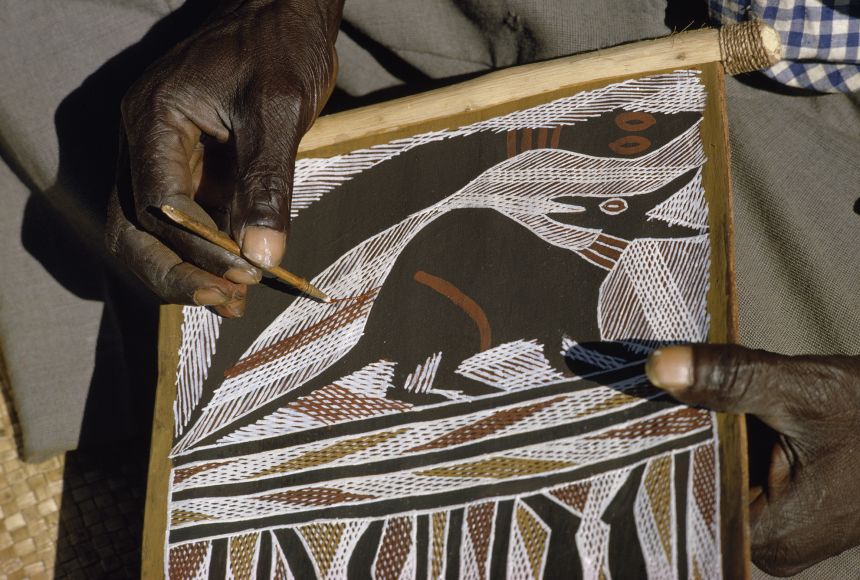ENCYCLOPEDIC ENTRY
ENCYCLOPEDIC ENTRY
Indigenous
Indigenous
Indigenous refers to people or objects that are native to a certain region or environment. They may grow there, live there, be produced there, or occur naturally there.
Grades
6 - 8
Subjects
Anthropology, Social Studies, World History
Image
Aboriginal Artwork
Aboriginal Australians have lived on their island continent for tens of thousands of years, and have a rich and varied cultural history of art, storytelling, and connection to the unique land they've called home for hundreds of generations.
Photograph by Charles Allmon

Media Credits
The audio, illustrations, photos, and videos are credited beneath the media asset, except for promotional images, which generally link to another page that contains the media credit. The Rights Holder for media is the person or group credited.
Manager
other
Last Updated
November 20, 2024
For information on user permissions, please read our Terms of Service. If you have questions about how to cite anything on our website in your project or classroom presentation, please contact your teacher. They will best know the preferred format. When you reach out to them, you will need the page title, URL, and the date you accessed the resource.
Media
If a media asset is downloadable, a download button appears in the corner of the media viewer. If no button appears, you cannot download or save the media.
Text
Text on this page is printable and can be used according to our Terms of Service.
Interactives
Any interactives on this page can only be played while you are visiting our website. You cannot download interactives.